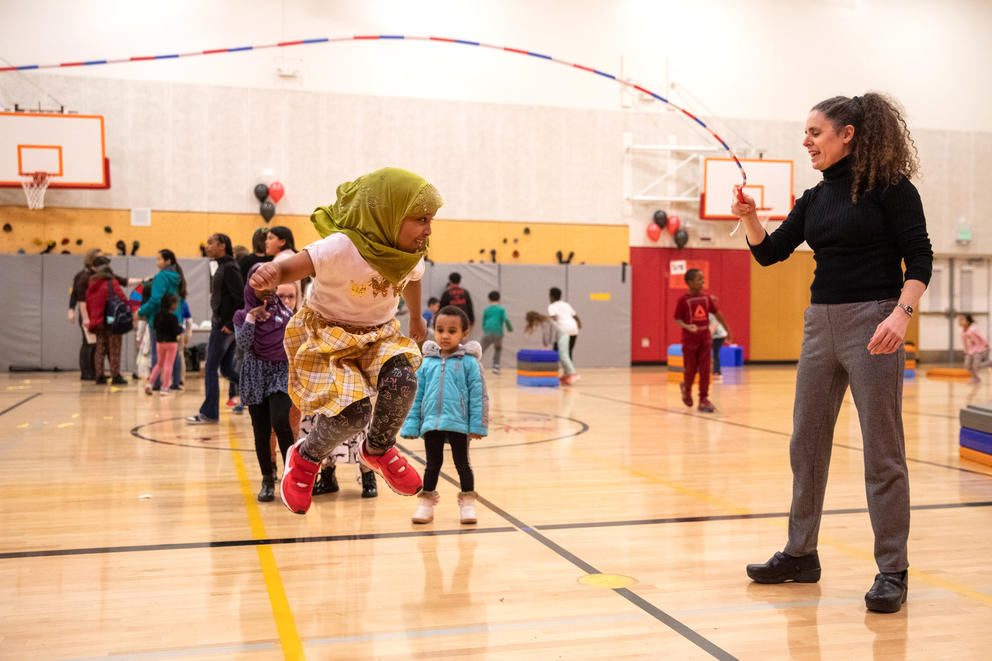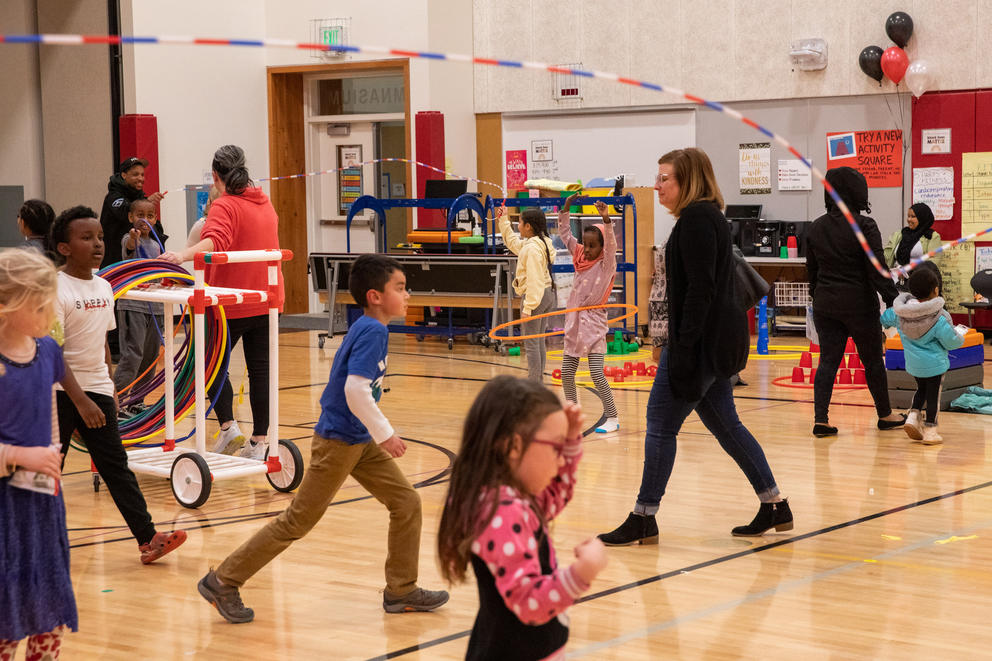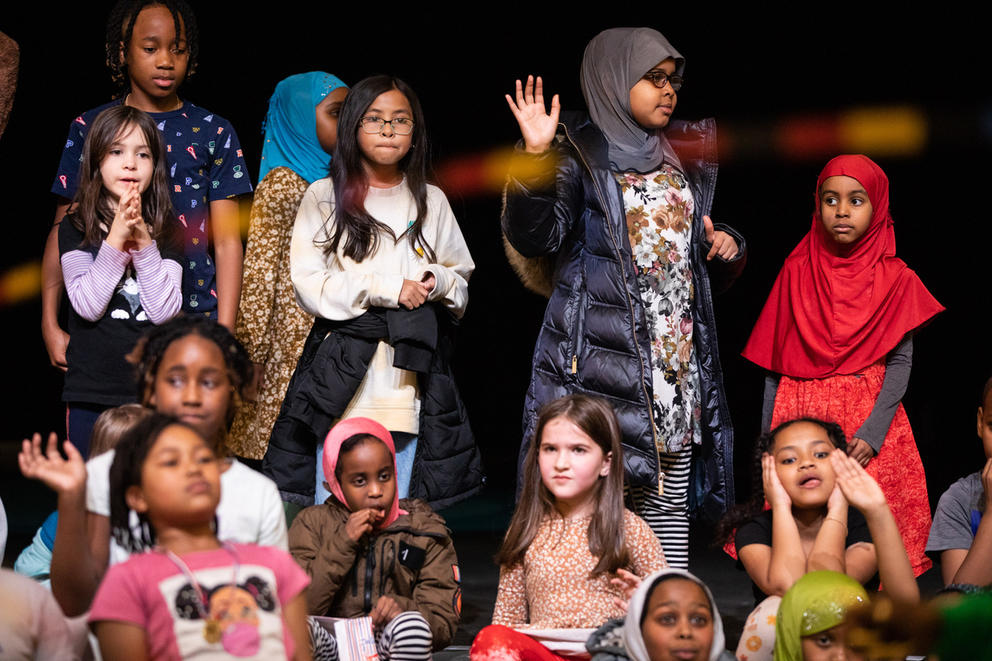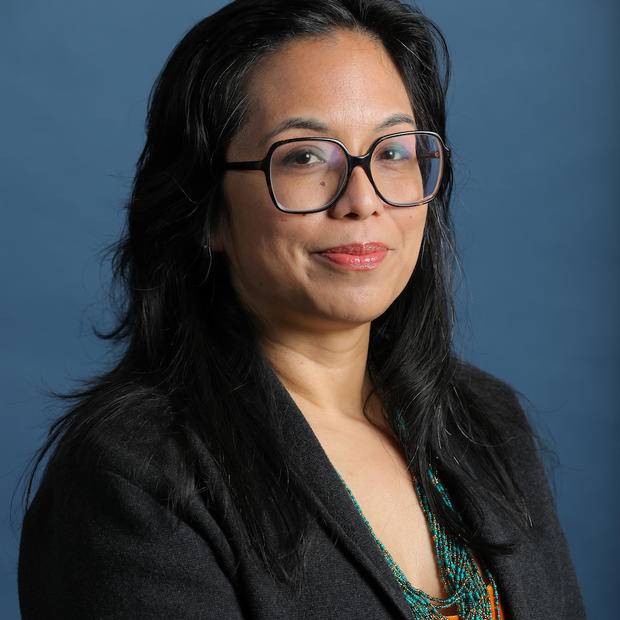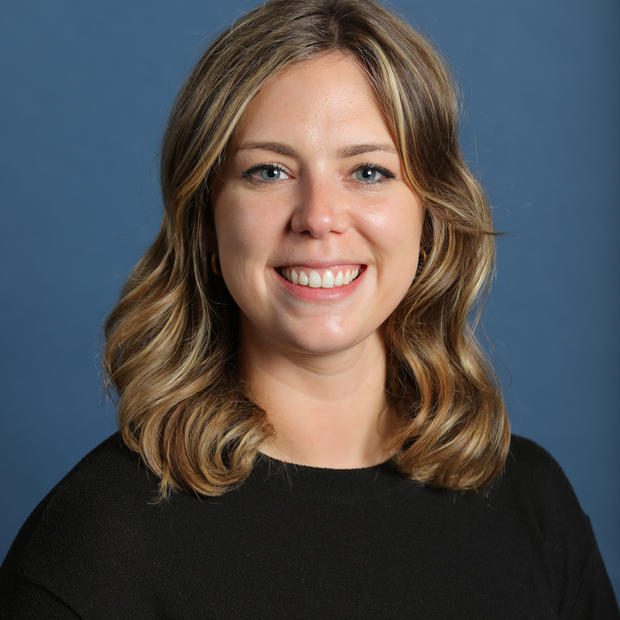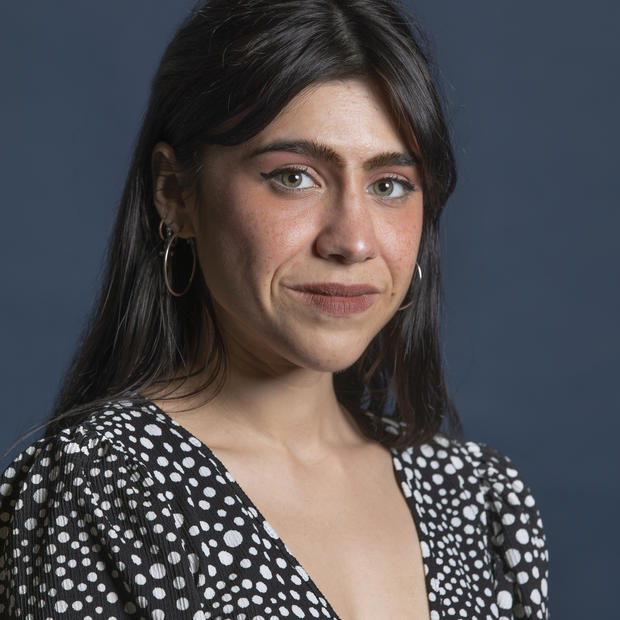The Southeast Seattle Fundraising Alliance, which organized the move-a-thon, plans to distribute the funds among 17 schools – some of which have among the highest levels of low-income families in the city and most of which have not raised money through their PTSAs.
The fundraiser raised $360,000, a slight decline from last year’s $400,000 and well short of this year’s $500,000 goal. But that’s still more than what some of the participating schools had been able to do on their own.
Some PTSA groups say long-term success would look very different – maybe not like fundraising at all.
For many people in the United States, PTSAs in the past 20 years have been synonymous with raising money for extra school items – auctions, chocolate bar sales, and move-a-thons like the one in southeast Seattle. These might raise money for field trips, school signage, robots or other expensive equipment that doesn’t necessarily fit into a school district’s general budget.
But those efforts take time, energy and often connections, to the detriment of schools where families have less disposable income, or where all the adults in a home have circumstances that make volunteering difficult, such as an inflexible job or a chronic illness.
Some Seattle parents are advocating for a different model of PTSA participation, and raising a question: Does fundraising inadvertently exacerbate the inequities already present among neighborhood schools?
While some Seattle schools are able to raise money to hire reading specialists and after-school tutoring, the Southeast Seattle Fundraising Alliance’s grants have been more modest. This year’s funds will be divided according to a formula that considers demographics, so schools with greater proportions of students of color, English Language Learners, low-income or Special Education students will get a slightly larger cut.
So far the Alliance has paid for smaller-ticket items such as art materials, food distribution bags, and coffee or child care at PTSA meetings – one way to boost family engagement.
“Our dollars are not going to supporting staffing, for example, but it can support copy paper – so, things that our schools need to have, but typically we wouldn't have been able to [in the past] be in the position to offer,” said parent organizer Christina Jiménez.
Vivian van Gelder, vice president of the Seattle Council PTSA, a district-wide group of school PTSAs, said that the system of individual fundraising at each school has long been broken. Among other inequalities, Seattle’s lower-income areas also have less-resourced schools because their families do not have the flexible time or disposable income to make up for budget shortfalls with school auctions or other fundraisers.
“We have this systemic problem [that] doesn't work for any school. Instead of figuring out the problem for the entire system, you are trying to solve it for your individual school,” van Gelder said. “It’s not a bad impulse, it’s just what they’re used to.”
Van Gelder is one organizer behind the Seattle Council PTSA’s Take Back PTA movement, a district-wide effort that aims to de-emphasize fundraising and calls for increased advocacy at school board meetings and at the state level. Parent organizers and supporters of the movement have spent a decade working on the question of what more equitable resources at schools might look like, and if fundraising has a role in equalizing schools.
“We aren’t ATMs, blank checks working at the whims of districts or administrators; we are organizers, problem-solvers, centers of school communities, support for families, and we are advocates for all children, for every child,” Take Back PTA’s website pointedly states.
Southeast Seattle is not the only neighborhood in the city where parents are attempting to eliminate the inequities of school fundraising.
In West Seattle, a coalition of PTSA groups have been discussing ways to share the parent-fundraising wealth across schools in this part of Seattle. They say the long-term goal is to close fundraising disparities between schools located just a few miles from each other but which have radically different racial and economic demographics.
While these groups are working toward new models of engagement and fundraising, some skeptical parents still feel that they have no choice but to hold fundraisers to make sure their own children don’t lose out.
Kristen Corning Bedford, an organizer of the West Seattle Public School Equity Fund, says she sometimes hears that objection from parents as their group advocates for more equitable PTSA funding.
“It’s tough because your kid is in the system right now, right?” she said. “They're going to move through the system and be out – and you want them to have what they need.”
It’s the same in southeast Seattle, where some schools have had active PTSAs and successful fundraisers.
“We have schools on board that are in our alliance that are struggling with this – their experiences of raising a lot of money for their schools, and the school and families expecting their programs to continue,” Jiménez said.
Some of the advocates interviewed for this story feel that schools have become more reliant on parent groups to fill in learning gaps in the face of stretched budgets and dwindling enrollment. This increases the disadvantages for low-income neighborhoods where families lack the funds, work connections, time, or grant-writing/fundraising experience that would result in a successful campaign.
Inequities in dollars and engagement
While the efforts in West Seattle and southeast Seattle are focusing on the inequities of parent fundraising, the issue is not new, especially among the fundraising groups called PTAs and PTSAs.
The Washington State PTA emphasizes family engagement and helping school supporters learn how to advocate for their schools at the legislative and local levels.
And In 2012, the Washington State PTA adopted a resolution discouraging local PTSAs from raising money to pay for teachers and other staff, instead emphasizing advocacy for better state funding of schools.
“The subsidizing of additional school staff during the school day through use of PTA funds carries a number of risks including, but not limited to, increasing inequities in students’ learning experiences, creating a misleading perception of the resources available to a school or district, skewing data used for tracking student progress and creating an ongoing obligation for the district that it cannot sustain,” the resolution states.
The resolution calls out the state to follow its Constitution, which specifically addresses funding of student education, but doesn’t shame local PTSAs for raising money for school staff, saying those efforts are “consistent … with PTA’s vision of making every child’s potential a reality.”
PTAs, however, are organized from the ground up, each locally run as a nonprofit by a school’s parents, teachers and students. They set their own bylaws and priorities, and it’s up to the members of each to decide how a PTSA will engage with families and schools – whether by organizing a big auction, sharing funds raised by its parents to help another school or spending tens of thousands of dollars to hire school staff members to supplement their children’s education.
Large fundraising efforts by local PTSAs have raised eyebrows in the past, with $100 raffles for Teslas and auctions that bring in hundreds of thousands of dollars. That level of resources can pay for extra staff.
Compared to the coffee socials and art supplies that southeast Seattle’s move-a thon was able to provide, Seattle Public Schools has a list of grants that shows which schools are able to bring in parent-funded supplemental staff. A few examples:
- $126,000 for a 0.7 FTE Academic Intervention Specialist, two tutors and an art program at McGilvra Elementary School in Madison Park (11% low-income and 39% students of color);
- $75,000 for a half-time reading interventionist and a half-time teacher at Whittier Elementary School in Ballard (8.3% low-income, 26% students of color);
- $85,000 at Salmon Bay K-8, an alternative school in Ballard, for a full-time theater teacher, a .3 FTE MS teacher and a 0.2 FTE nurse (10% low-income, 26% students of color).
There are some notable exceptions to the correlation between demographics and fundraising ability. The student body of TOPS K-8 school, an alternative school in Seattle’s Eastlake neighborhood, is 31% low-income and 57% students of color. That PTSA was able to raise $129,000 for an 0.4 FTE Elemental Instrumental Music Teacher and for hourly tutors.
Van Gelder said the district grant list doesn’t even account for grants that individual teachers or administrators might receive for professional development, exacerbating the differences in student learning opportunities that ongoing teacher training can create. It also doesn’t include dollars a PTSA might direct toward expensive equipment or student trips.
Advocates for equity aren’t necessarily hating the players; the problem is the game.
“And why is it that we don’t have a reading specialist in every school? We shouldn’t be in a situation where we need to fund reading specialists or fund librarians,” Jiménez said.
The West Seattle group is taking a slightly different approach to bring more financial equity to schools. Instead of holding new fundraisers, the West Seattle Public School Equity Fund asks the PTSAs of seven elementary schools in West Seattle to contribute money to be distributed to five schools in lower-income neighborhoods in West Seattle and White Center. This past school year, Gatewood, Genesee Hill, Lafayette and Pathfinder elementary schools shifted funds to Concord ($4,646), Highland Park ($4,366), Roxhill ($4,130), Sanislo ($2,507) and West Seattle ($5,266).
In West Seattle, the fundraising alliance found that the economic line between school boundaries roughly correlates geographically to the historical redlining that kept people of color out of the more well-off parts of the neighborhood. While that historic racism is no longer allowed, the impact is still clear decades later.
“This is one place where we actually got to say, ‘Oh, look, historical racism has set up systems, creating systemic racism in our education system, and this is how it plays out,’” said parent and organizer Shannon Woodard. “It … is not about some teacher grading a student unfairly. It’s about how it’s funded, what resources are available.”
The recipient schools do receive Title I funds – additional federal grants for schools with higher levels of low-income families, meant to lessen the impact of poverty on a student’s education. If at least 40% of a school’s students qualify for Title I, the school must pay for additional staff and programs to improve academic outcomes, including reading interventionists or behavioral specialists.
But the Title I system has led some parents at other schools to be skeptical of the need for sending fundraised money to schools other than their own.
“There's so much misinformation,” said fundshifting organizer Andrea Dimond. “There’s very much a story given to PTAs at well-resourced schools that the Title I schools get everything with all of that extra Title I funding they have: ‘So we have to fundraise to make up for what we don’t get, because [Title I schools] are just rolling in staff and have all these things that we don’t have at our school.’”
Some of the contributing schools in West Seattle held mini-fundraisers to raise additional money for the fundraising pool, which organizers say is well-meaning but still falls short of addressing the systemic problems.
“So some schools, their response has been like, ‘OK, well, we can contribute to this fund; we’ll do this extra fundraiser that’s just for this fund,’" Dimond said. “And we’re like, ‘Oh, not more fundraising; the fundraising is the problem.’”
“That’s a place where there's definitely some pushback,” she added. “People struggle with that, [saying things] like, ‘Well, if we're giving money to you, then we have less money. So how are we supposed to meet our budgeting goals?’”
The future
Dimond said the West Seattle group knew at the get-go they couldn’t simply approach more established PTSAs with the idea of pooling 100% of their funds or eliminating fundraisers in favor of advocacy. Not everyone is ready for that conversation.
“If we went about talking like that right now, I think we would have been shut down pretty quickly,” she said. “Our goal was just to try to get everybody to, like, put their toe in the water and see, ‘It’s OK, right … nothing bad happened.’”
Van Gelder says in a world of $100 raffle tickets for Teslas, even the boards of the more well-off PTSAs are starting to come around to the idea of focusing on advocacy instead of fundraising – an ironic result of rising teacher pay in Seattle, making it more difficult to raise money to hire extra staff for an individual school.
However, she said that a shift to advocacy could also lead to compounding inequalities if individual PTSAs keep the focus on their own school needs instead of improving schools for everyone.
“People who are more affluent, and more available, and more likely white, are able to be more engaged in the discussion,” Van Gelder said. “You shouldn’t be focusing on one school. We can all combine together, and our voices are more powerful when there are more of us.”
While the Southeast Seattle group is trying to help its local schools address their immediate needs, Jiménez says PTSAs in general should figure out a way to start spending parents’ and students’ valuable time on advocacy, instead of pounding the pavement for donations.
“How do you make that shift?” Jiménez said. “You start by asking really hard questions about why we’re doing it in the first place, and taking some responsibility for our choices — around spending hours and hours and hours, bringing in sponsors and things to bid on and all this stuff. That's just like, what are we doing here?”
Corning Bedford said that in recent meetings of the West Seattle PTSAs, there seemed to be a growing acknowledgement among the boards that something has to change, and the biggest impact won’t be a neighborhood-to-neighborhood solution.
“We have to hold this tension between what we need – you honestly do want to advocate for your child … And then how do we make sure that we’re working towards something different.”
For Woodard, having parents recognize the possibilities of teaming up is just the beginning.
“I don’t think I have any idea about what PTA funding should or shouldn’t look like, right? I have no idea what is happening behind closed doors down in Olympia, figuring out how schools are funded,” she said. “But what I can say is that we all should be supporting each other in creating a world that we all want to live in.”

